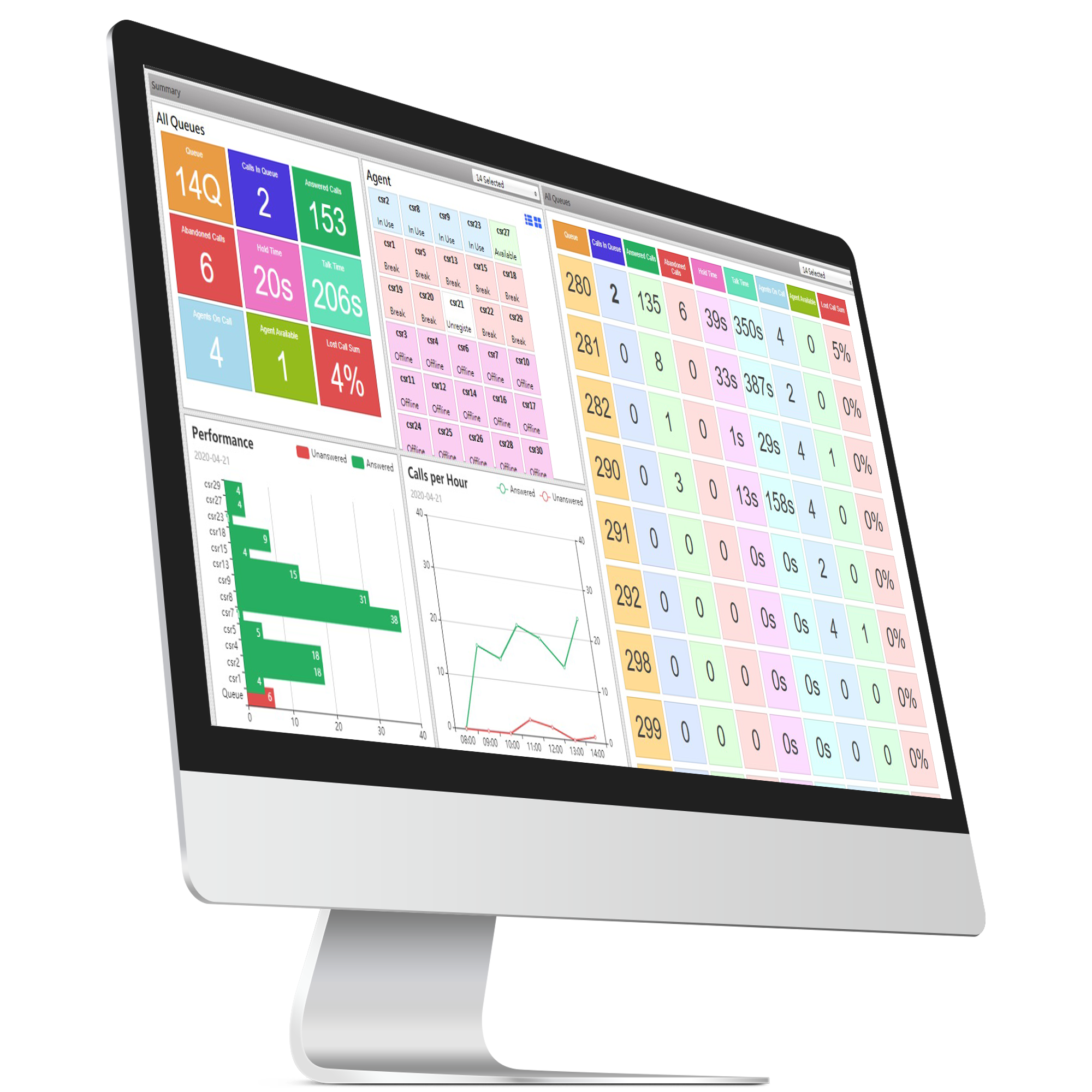Functions
Queue Group Status
The queue board will show per queue groups' real-time information, so agents and managers will have clear understandings of the current
call situation in call centre, for better management.
Agents Status
Agents could easily change their status to online or break. If agents turned their status to break, calls would not be transferred to their
extensions until status turned back to online. This ensures all agents is prepared and ready when they pick up customers' calls, guarantee
excellent customer service.
Calls In Queue
Calls in queue shows call center agents how many customers are in the queue. When all agents are busy on phone, no one can pick up the
rest of the calls, so these calls will be routed to the queue list, waiting for agents to pick up when they finished their current call.
Agents can also answer calls by prioritized value. Real-time statistics allow agents to make intelligent decisions when answering calls from
the queue, enabling a quick response to your most valued customers.
Answered Calls
Answered calls tells call center agents that how many customers have been answered. When the calls are answered by the agents, the queue
board will increase the number of answered calls automatically, providing real-time information. Managers could use this data to forecast
the sales rate, agents' productivity and performance, as managers could see how many calls per agents answered.
Abandoned Calls
Abandoned calls shows how many customers have hung up. Usually when customers are in queue and waited for too long, they will
choose to hang up, and a dissatisfied customer is created. Managers and call center agents should try their best to minimize the number
of abandoned calls.
Average Hold Time
Average hold time is the average time taken for an agent to answer a call or the time a customer waits in the queue before being answered.
Call agents and managers could base on this real-time information to reduce the handling time per call, to minimize the waiting time of
customers.
Average Talk Time
Average talk time is the average amount of time the agent spends communication with the customer. Agents should base on what the
customer need, and decide the talk length, whether the call should end quickly or not. Managers could also supervise agents when they
are talking on the phone for too long.
Agents On Call
Agents on call shows how many agents are currently on phone with customers. If the call center has 80 agents, and 75 agents is on call,
meaning that there are 5 agents left, so there should be no customers on hold. How long has each agents been on call for, and have they
taken any call today is also showed in the queue board. Managers could easily use this information to control the whole call center's
working atmosphere.
Agents Available
Agent available shows how many agents are currently available to answer customers' calls, which means these agents are not on phone at
that moment.
The real-time information of agents on call and agent available is often use together. Using the previous example in agents on call, that 5
out of 80 agent is available, when agents know this information, they could handle the calls more relax, but if all agents are on phone, and
there are many calls on hold, agents may need to try to speed up their conversation and end the call.
Agents available also shows details of the last call take and how many calls each agents had today. Managers could use this information to
do resource allocation. If too many agents are available, agents may be oversupplied.
Lost Call Sum
Lost call sum shows the percentage of how many calls a queue group has lost. It is a reminder for all agents to speed up their phone
conversation with current clients when the lost call sum percentage is growing higher and higher. To avoid having more and more
dissatisfied customers. If the lost call sum percentage exceeds 50%, managers must have a good review on agents' productivity and
consider training and hiring.
Call Waiting
Queue Board shows real-time call waiting information, which allows agents and managers to see how long the customer has waited
for agents to pick up their call. Customers call in priorities could also be seen. If the customer is in position 1, he or she is the first
one in the list of calls waiting, which means he or she has waited the longest.
Managers should set a limit of waiting time, if the customer is close to the limit, agents should try to answer the customers as quickly
as they can, to avoid the queues being too long, and too many unhappy customers caused. Allowing managers to manage the whole call
center via the call center management software flexibly.

.jpg)

